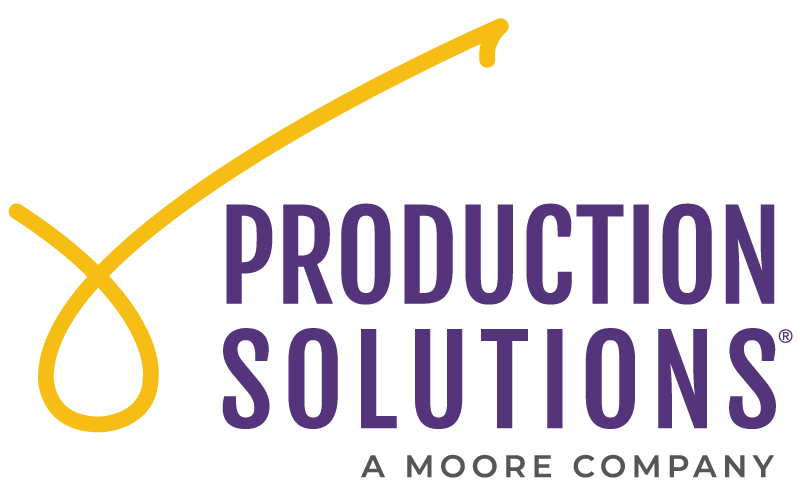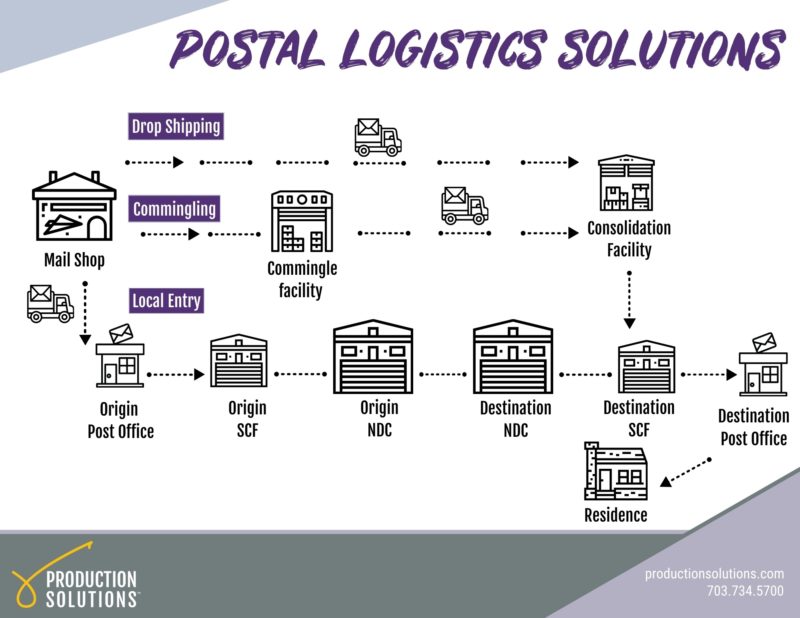Lifecycle of a Mail Piece

Carolyn Angelini
Director of Resource and Postal Affairs
Katherine Gouldin
Brand Communications AssociateThe work of postal workers, and how PS manages this information to help our clients, is incredibly valuable. It’s important to understand the mail piece lifecycle and it’s different milestones just as a postal worker does, to elevate your understanding of the post office! From the mailshop to the donor’s residence, the mail piece takes on a full lifecycle, with many different variations of possible methods of delivery: local entry, commingling, or drop shipping. Here at PS, we do all that we can to ensure the mail is delivered as quickly as possible, on time and on budget.
Within this infographic, we illustrate the different processing areas and number of times mailpieces are handled. Note that these three methods are the general directions within the lifecycle, although the route varies each time. This graphic represents how many different destinations that mail can go to in one process.
Local Entry
When mailing local entry, you enter the mail at a post office close to your mailshop or office. From there, the USPS handles all transportation through their network. The local post office enters the mail that you give them, and they pass it to a Sectional Center Facility (SCF) or National Distribution Center (NDC). (A SCF is a processing and distribution center of the USPS that serves a designated geographical area defined by one or more three-digit ZIP Code prefixes. A sectional center facility routes mail between local post offices and to and from National Distribution Centers. A NDC is a highly mechanized mail processing plant of the USPS that distributes standard mail and package services in piece and bulk form.)
These facilities segment mail based on destination areas of the country, where they will be transported to either a destination SCF or a destination NDC closest to the delivery zip code. There are a few hundred SCF’s in the country, and 33 NDC’s. SCF’s generally process all the mail coming into and going out of a certain 3-digit zip code – (i.e. the first three digits in a 5-digit zip, and all 5-digit extensions starting with those three digits). NDC’s handle much larger areas. After going to the destination SCF and NDC, the mail piece will travel to the destination post office, and finally to the donor’s residence. Many times mailing as local origin will take the longest time to get in-home, which is why PS offers other alternatives such as commingling, which can bypass some of these steps so that the mail can get to the donor faster!
Depending on the relationships between the mail shop and the local post office, some mail shops have the post office within their facility, called a DMU (a detached mail unit), where the mailshop certifies the mail and it doesn’t go to a separate location, and instead goes straight to origin SCF. If the mailshop does not have the post office within their facility, the origin post office consolidates the mail before it goes to the origin SCF.
The SCF and NDC are the locations that have all the processing equipment, where the mail is consolidated/sorted into trays according to 3-5-digit zip code here. This option of mailing local entry and having the post office do the sorting at the SCF and NDC center is typically the most expensive for the mailers.
Commingling
When Commingling, you bypass many of the steps just described in entering mail by local origin. The mail can go from the mailshop to the commingler, directly to the consolidation facility, and then to the destination SCF.
This is typically less expensive than mailing local origin because the post office gives the commingler a discount for doing many of the steps that they would have taken themselves!
Drop Shipping
There are times when Dropshipping/ mailing by Co-palletization will make the most sense for a program of large quantity. In this case, mail is routed directly to consolidation facilities to destination SCFs and NDCs. This is the least expensive option because the mailshop packs the 5-digit trays that go straight to the destination. The mail goes straight to the SCF in large quantities to build the trays themselves. Depending on the characteristics of the mailing, mailings of over 100,000 might make sense to drop ship. The post office gives PS the deepest work–shared discount for this, because it requires less processing within their facilities.
Regardless of your chosen method of mail entry, the mail carrier or postal worker at your DDU (direct delivery unit) will case the mail for their individual delivery routes. The carrier organizes the mail based on their walk sequence that they take from residence to residence, and they deliver the mail piece to the donor’s mailbox which completes the mail piece lifecycle.
About the Author

Carolyn Angelini
Director of Resource and Postal Affairs







